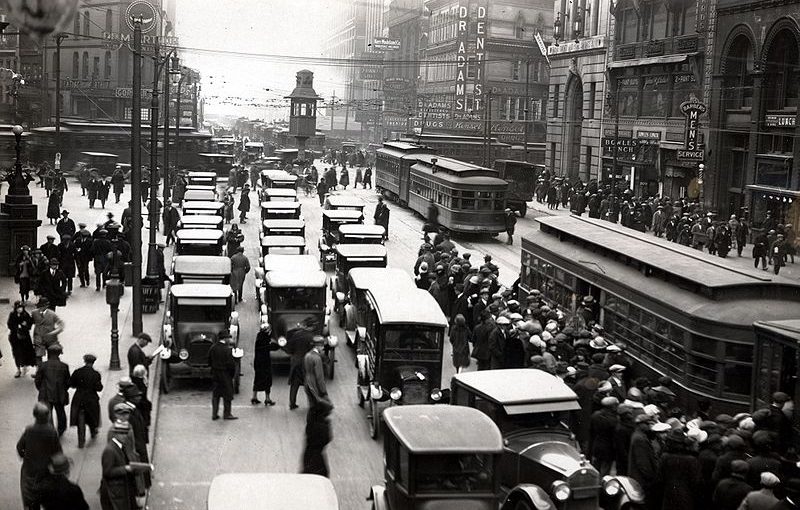
We often discuss current issues on this blog, but it’s important to remember your roots. Sometimes when you look back at history, it can inspire ideas for the future. At the very least, you’ll learn something. This week, we’ll cover the 1920s.
The Industrial Revolution created massive changes to the world as we know it, and with the Technological Revolution not far behind, we have advertising to thank for that expansion. The construction and operation of the Pacific Railroad in the 1860s paved the way for companies to market their goods and services on a national level. Advertising evolved from merely introducing products to persuading consumers that they simply could not live without them. Companies were able to establish brand loyalties on a whole new level, with their consumers.
Thanks to the Technological Revolution and the rise of advertising, publication prices dropped from a steep thirty-five cents to a reasonable nickel. Themes changed, and instead of publishing articles on reform and the revolution, magazines began reporting on consumer activism, the belief that a country can only benefit if its people buy and use all of its goods and services. Publications like Ladies’ Home Journal aimed to reach the homes of the middle class while Mr. Henry Luce and former Yale University classmate, Briton Hadden, aimed to reach more sophisticated individuals with his publication Time in 1923. This was the start of prestigious movie stars and entertainers persuading consumers to buy an array of different products from cigarettes to coffee.
But the star of this story is actually Radio. It wasn’t until the 1920s that radio became the foundation for communication as it is today. There is a great debate as to who was actually the first to broadcast radio in the 1920s – Netherlands, France, England, or Germany. Radio ended up being the medium for entertainment due to the Great Depression and the influence and recognition of urbanization and production of goods. Radio hobbyists considered radio a relaxing pastime, while many thought of it as a demonstration of society’s trials and tribulations. The newspaper industry, of course, considered radio to be a nuisance.
David Sarnoff, steadfast advocate for the concept of broadcast, takes the credit for being the one to make radio a part of American culture. The Radiola premiered in 1922 and sold for a hefty $75, a price that, with a little financial discipline, every American middle class citizen could afford. The first year, American Marconi, now known as RCA, brought in sales of $11 million, and by the mid 1920s sales crept up to a whopping $60 million.
The demand for entertainment radio was climbing but there were no funds for it. Governments and corporations saw radio for what it could become – an advertising outlet to reach the public with their messages. But the public consensus stood strong – radio shall stay owned by private companies, and advertising was not on the welcome wagon. However, with a little time and thought, commercial messaging won. In the early 1920s, the American Telephone & Telegraph Co. created WEAF, a toll station. It worked like this: if a company or organization had something they wanted to broadcast, they simply had to pay a small fee. AT&T was the first willing to pay the toll for broadcast, and on August 24, 1922 the first commercial aired on WEAF. It was for the Queensboro Corporation, who paid $50 for a 10-minute commercial promoting apartments in New York. As a result, many apartments were sold, and direct advertising was claimed a huge success. In less than a year, WEAF was playing advertising host to some of today’s biggest organizations such as the YMCA, Metropolitan Insurance Company (better known as Met Life), and my personal favorite – R.H. Macy’s department store.
J. Walter Thompson Company, which claims to be both the first full-service ad agency and the creator of the grilled cheese sandwich (for client Kraft in 1930), was considered the leader in radio advertising. Camel and Lucky Strike began duking it out in a war for the tobacco crown. Radio advertising became an intense competitive market from there on in. It set the stage for what history likes to call the Golden Age of the 1930s. More on that next week…